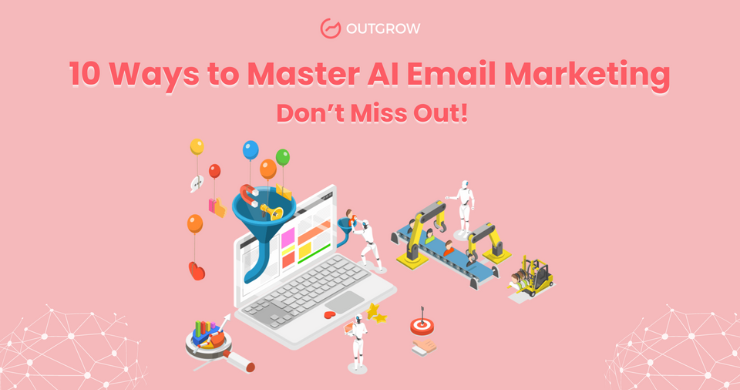
The use of affiliate marketing is an effective approach for boosting sales and generating substantial revenue online. This shift away from traditional marketing methods has been highly advantageous for both brands and affiliate marketers.
In the United States, spending on affiliate marketing has risen from $5.4 billion in 2017 to $8.2 billion in 2022. This indicates that there are ample opportunities for individuals interested in entering this field. This systematic beginner’s guide will provide you with the necessary steps to start your affiliate marketing business and outline the advantages you can anticipate.
How does affiliate marketing work
To achieve an effective marketing strategy while sharing profits, affiliate marketing involves the participation of three distinct parties. This approach distributes the tasks of product marketing and creation among multiple individuals, thus utilizing their respective abilities.
- Seller and product creators.
- The affiliate or advertiser.
- The consumer.
To ensure the success of affiliate marketing, let’s analyze the intricate relationship between these three parties.
Seller and product creators
The individual or organization selling a product, whether they are a single entrepreneur or a big company, is known as a seller. This seller can be a vendor, merchant, creator of products, or retailer. The product being sold can either be a tangible item, such as household goods, or a service, like makeup tutorials.
The seller, also referred to as the brand, is not required to actively participate in the marketing process; however, they have the option to be the advertiser and benefit from the revenue sharing aspect of affiliate marketing.
One possible scenario is that the seller, who could be an ecommerce merchant, has initiated a dropshipping business and intends to increase their reach by compensating affiliate sites to advertise their products. Another possibility is that the seller is a SaaS company utilizing affiliates to aid in selling their marketing software.
The affiliate or publisher
The affiliate, also referred to as a publisher, can be an individual or company that promotes the seller’s product to potential consumers in an attractive manner.
The main objective of the affiliate is to endorse the product by convincing consumers of its value or benefits and ultimately persuading them to make a purchase. If the consumer does indeed purchase the product, the affiliate is entitled to a share of the income generated.
Affiliates typically target a specific audience and tailor their marketing efforts to align with that audience’s interests, thereby establishing a distinct niche or personal brand. This strategic approach enables the affiliates to effectively attract consumers who are most inclined to respond to their promotions.
The consumer
In order for the affiliate system to be effective, it is crucial to have sales, which are ultimately driven by the consumer or customer.
If the affiliate selects the appropriate channel(s) such as social media, a blog, or a YouTube video, they will promote the product/service to consumers. If the consumer finds the product valuable or beneficial, they can click on the affiliate link and complete the purchase on the merchant’s website. Once the customer makes a purchase, the affiliate will receive a percentage of the revenue generated.
As you think about the process, reword the following text without changing the meaning. Remember to ensure the customer is informed about you, the affiliate, earning a commission from the product.
The Federal Trade Commission states that a retailer’s relationship with an affiliate marketer must be disclosed in a clear and obvious manner, enabling consumers to determine the significance of your endorsement.
By providing a disclaimer along the lines of “Company X provided me with the products featured in this video,” you provide your viewers with necessary information that enables them to make an informed choice regarding their purchase of the affiliate product.
Types of affiliate marketing
Sometimes, it may not matter to the customer whether an affiliate marketer has truly used the product they are promoting or if they are solely motivated by financial gain, leading to ambiguity.
In some cases, like diet services or skincare products, customers may not have confidence in an affiliate unless they have confirmed they personally reviewed and endorsed the product.
Renowned affiliate marketer Pat Flynn categorized affiliate marketing into three types in 2009 to assist in distinguishing between affiliate marketers who have a strong connection with a product and those who do not. The three types are unattached, related, and involved.
In order to assist you in choosing the appropriate option, we will analyze each category individually.
Unattached
The unattached business model entails that the affiliate marketer lacks any connection to the product or service they promote. They do not possess any expertise or authority in the product’s niche, and they are unable to make claims regarding its use.
An unaffiliated affiliate will usually manage PPC (pay-per-click) marketing campaigns, where they use an affiliate link, hoping for shoppers to click on it and independently make a purchase.
Unattached affiliate marketing may be appealing because it doesn’t require commitment, but it primarily appeals to individuals who want to earn income without investing in the product or customer relationship.
Related
Affiliate marketing, which is related to but not entirely attached or involved, provides a balanced approach for individuals who are not direct users of a product or service, but still have a connection to the specific target audience. These affiliates typically possess influence in the niche and a pre-existing following, thereby enabling them to lend some level of authority.
If, for instance, you have a fashion blog or YouTube channel, you can promote a clothing brand that you have never used before, making you a relevant affiliate marketer.
The advantage of this form of affiliate marketing lies in the affiliate’s ability to generate traffic. However, there is a potential risk for them to lose the trust of their audience if they recommend a product or service they have never actually used, which could be of poor quality.
Involved
Involved affiliate marketing is characterized by individuals closely connected to the product or service they are promoting. These affiliates have personally tested and endorsed the product, demonstrating trust and credibility to make claims about its effectiveness.
Instead of depending on pay-per-click, affiliate marketers who are more involved incorporate their personal experiences with the product into their marketing strategies, establishing themselves as trustworthy sources of information that customers can rely on.
Naturally, this form of affiliate marketing demands additional effort and time to establish trustworthiness, but it is anticipated to yield higher rewards in the future.
How much do affiliate marketers make
According to survey data from the Influencer Marketing Hub, the income from affiliate marketing can vary.
- a small percentage (3.78 percent) earn over $150,000 annually
- 7.94 percent earn $100,000 to $150,000
- 5.15 percent earn $50,000 to $100,000
According to the survey, the majority of affiliates (57.55 percent) earn less than $10,000. This amount is considered insufficient to sustain a living in many countries. Bill Widmer, a content marketer and SEO consultant, suggests that this is likely due to the fact that most survey respondents do not engage in affiliate marketing as a full-time occupation.
The earnings of affiliate marketers may differ greatly due to different factors like their niche, the affiliate programs they join, the type of affiliate campaigns they run, the strategies they employ, and their level of effort.
Steps to run a successful affiliate marketing business
Now that you have an understanding of how affiliate marketing operates and the potential earnings it can generate, let’s delve into the process of commencing affiliate marketing in 2023. Follow this 6-step framework for affiliate marketing strategy to develop your own.
Step 1: Decide on your affiliate niche
To rephrase the text while maintaining the same meaning: To begin, you should identify the specific area you want to focus on. Dedicate some time to reflect on your personal interests and passions. What truly sparks your enthusiasm? As an affiliate marketer, it is essential to select a niche that corresponds with your existing expertise and knowledge in areas such as food, fitness, or technology.
If you enjoy traveling, you may want to consider specializing in adventure travel, budget travel tips, or luxury vacation experiences in order to create valuable content and share your knowledge with others.
Step 2: Pick the right affiliate program for you
Search for programs that are in line with your niche and provide personalized products or services that cater to your audience’s needs.
Make sure to carefully go through the commission rates, payment terms, and reputation of these programs. It is also recommended to research trustworthy affiliate networks such as the Amazon Affiliate Program or Commission Junction.
When choosing programs and affiliate marketing partners, give priority to authenticity and relevance. For instance, if your blog centers around beauty and you aim to endorse brands that don’t engage in animal testing, think about affiliating with a cosmetics company that conforms to this principle.
Piktochart’s affiliate program is another excellent illustration. Piktochart is a well-recognized brand in the field of visual content creation and has a people-centric culture. If your personal values align with the company, it is logical to become part of their program.
Later in the following section, you will be introduced to various affiliate programs suitable for beginners.
Step 3: Select your preferred content and content platform
To effectively showcase your knowledge as an affiliate marketer, start by selecting a content platform that aligns with your niche. Consider your strengths and interests and then begin creating content in the following formats.
- Blogging: If you have strong writing skills and a passion for beauty products, starting a beauty blog is ideal. Share in-depth beauty tutorials, honest product reviews, and insightful skincare tips with your readers. Incorporate a few affiliate links seamlessly within your content to drive conversions.
- Visuals: If you prefer a visually-driven approach, leverage social media to showcase products and engage with your audience. Create captivating infographics that provide valuable information and post them on platforms like Instagram. You can further use features like Instagram Stories to maximize your affiliate marketing potential.
- Video: If you have a talent for speaking and storytelling, consider launching a YouTube channel or a podcast. With a podcast, you can discuss the latest beauty trends, interview industry experts, and provide valuable advice to your listeners. On YouTube, you can offer step-by-step makeup tutorials, product demonstrations, and skincare routines while integrating an affiliate link or two in the video descriptions or annotations.
When you are making a decision about which platform to use for your content and which marketing channels to utilize, it is important to take into account the platforms that you regularly use and feel at ease with. Make sure that you have a good understanding of the chosen platform and are capable of using it effectively.
Below are some platforms commonly utilized by affiliate marketers.
- Blog and/ or a personal website: Share valuable content and incorporate affiliate links into your blog posts to generate income.
- Instagram: Showcase products through compelling images and engaging captions.
- TikTok: Create short and engaging videos to captivate your audience and drive clicks to your affiliate links.
- Facebook: Build communities, share content, and promote affiliate products through posts, groups, and ads on this widely-used social media platform.
- Pinterest: Use Pinterest’s visual discovery capabilities to create appealing pins that attract users to your website or blog.
- Pay Per Click (PPC): With PPC advertising, you can bid on keywords and display targeted ads, driving traffic directly to your affiliate links across search engines or social media.
- YouTube: Create tutorials, reviews, and demonstrations incorporating affiliate links in the video descriptions or annotations.
Step 4: Create helpful content
In order to boost engagement, click-through rates, and conversions to affiliate product, follow these tips to create helpful and compelling content once you have chosen the type of content and platform for your affiliate system.
- Seek expert advice: Collaborate with industry experts to provide well-informed reviews and recommendations. For example, consult a nutritionist for dietary tips or partner with a tech guru for gadget reviews.
- Think about search engine optimization: Conduct thorough keyword research to enhance your search rankings and improve your visibility. Strategically incorporate relevant keywords into your content to attract organic traffic and reach a wider audience. You can also use visuals for backlinks.
- Bring your unique perspective: Differentiate yourself by infusing your content with your authentic voice and personal experiences. Share stories, anecdotes, and insights that resonate with your audience, allowing them to connect with you on a deeper level.




